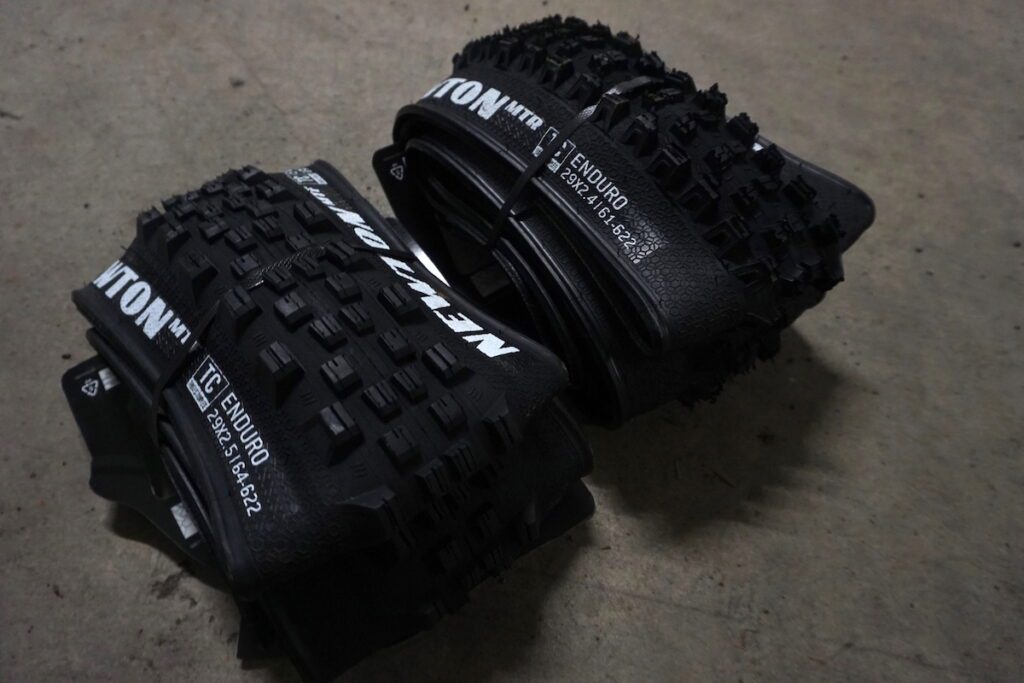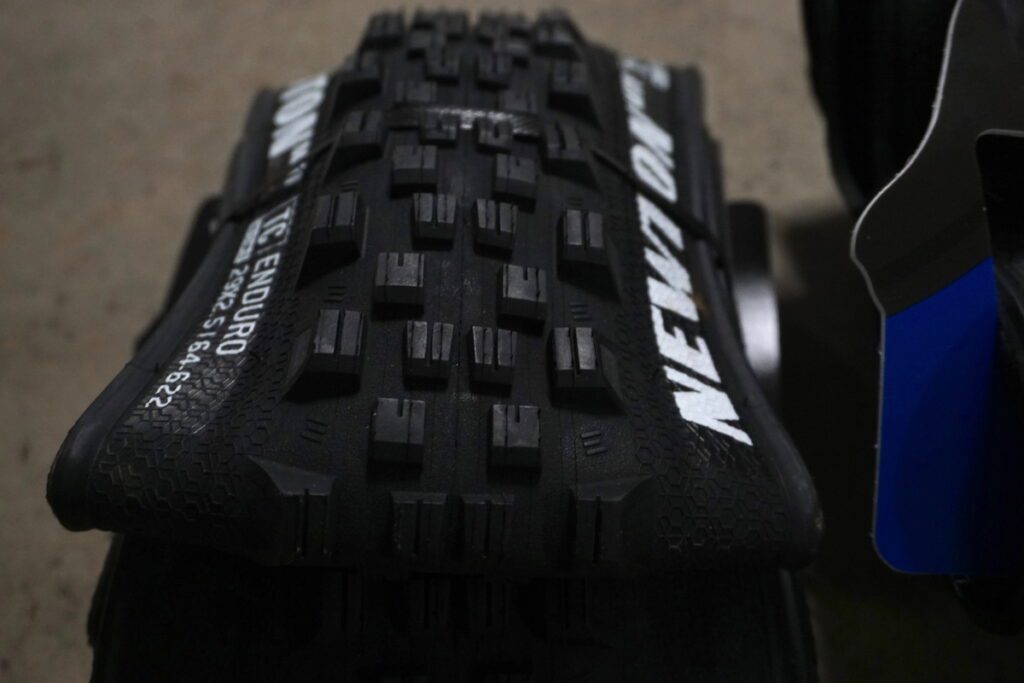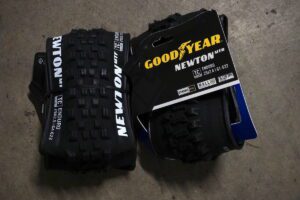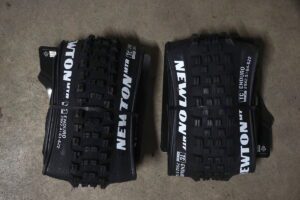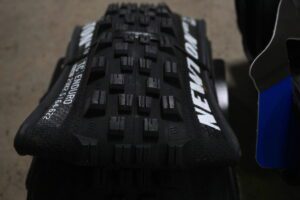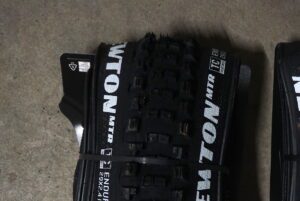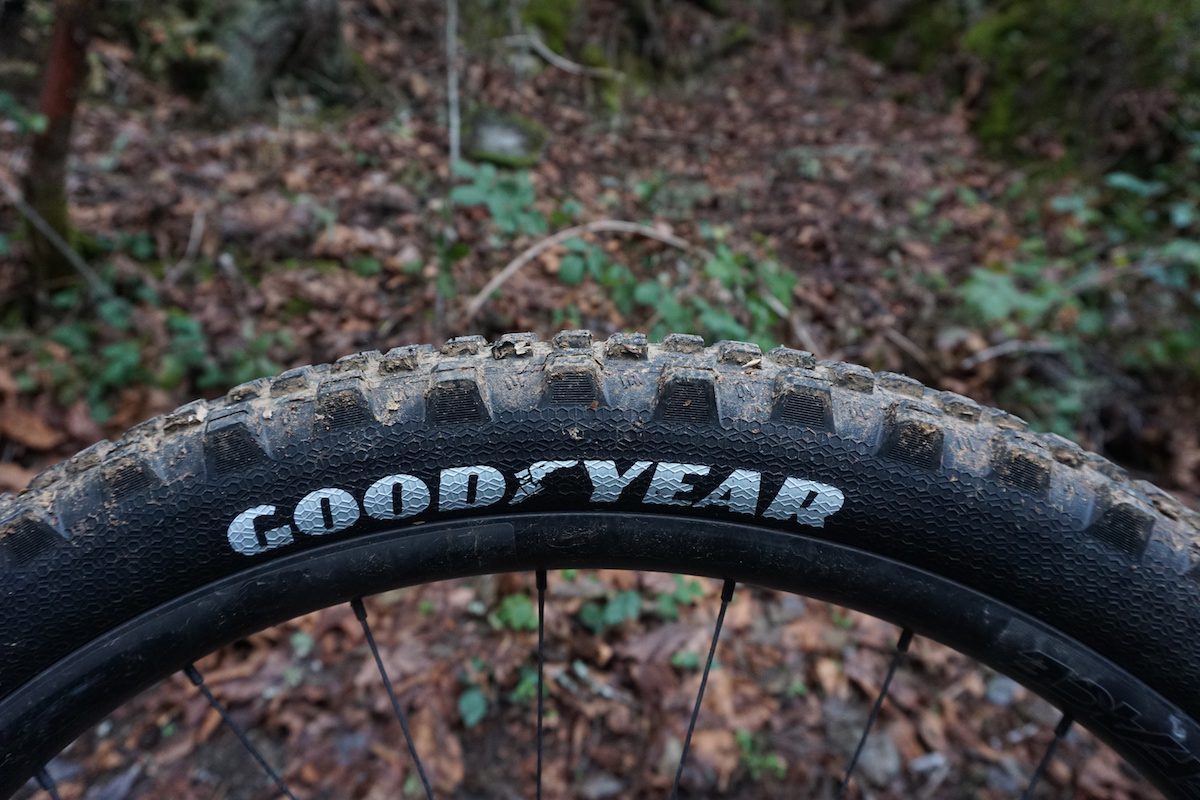Review: Goodyear Newton MTF/MTR Enduro tires
For riders keen on traction and not concerned about counting grams
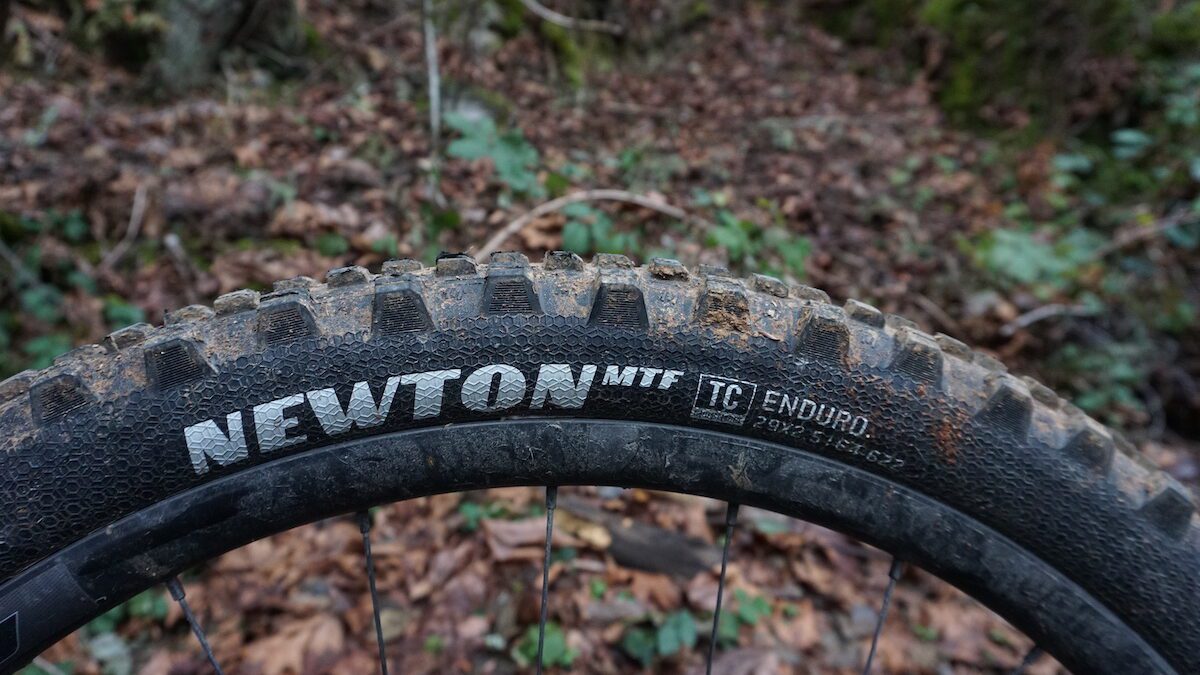
Mountain biking’s surge in popularity over the last decade attracted several new players to the tire game. They range from newly formed brands to well established brands in other industries bringing their expertise to bicycle tires.
Goodyear is among the latter. One of the oldest names in tires, Goodyear launched into mountain biking in 2018. It has expanded to a small line of mountain bike tires with the Newton MTF and MTR as its flagship tread patterns. After several months riding Goodyear’s aggressive treads, across several seasons on Canada’s west coast, the Newton combo proved to be an interesting combo. Not a generalist tire pairing, to be sure, but one that will have a strong appeal to a certain set of riders looking for an alternative to the established brands.
Goodyear Newton MTF/MTR
Goodyear is newer to mountain biking, though very obviously not new to tires. The company started way, way back in 1898 in Akron, Ohio, and is a big part of why that area is now a hub of tire development. According to Wikipedia, Goodyear actually started with bicycle tires (and carriage tires) shortly before getting into cars and then patenting the first tubeless car tire in 1903. Zeppelins came slightly later on.
Now, a little over a century later, Goodyear is making tubeless tires for mountain biking.
The Newton is Goodyear’s more aggressive tread designed for anything from trail to downhill, depending on which version you use. It comes in a front tread (MTF) and a rear tread (MTR). Both use new, though familiar-looking tread pattern.
The front uses alternating rows of two, tall and slightly ramped knobs spaced close or spread to either side of the center. This new take on a tried and true pattern gives the MTF predictable grip as you roll from center to the substantial row of side lugs.
The MTR uses alternating rows of dual knobs and a single wide, stepped knob that’s clearly designed to maximize traction.
Construction
Offered in three versions: Trail, Enduro and Downhill. The Enduro tire, tested here, uses a dual-ply 120TPI and Goodyear’s EN:Wall protection (a butyl layer in the casing that adds cut and abrasion protection as well as adding more sidewall support). The Newton MTF uses a front-specific triple compound (40/42/60a) rubber that maximizes grip. The MTR also uses a triple compound but with 40/50/60a rubber to add more durability to the tread with the slower 40a for grip.
The Trail is simpler, with a dual-compound and single 60TIP casing. The Downhill uses a tougher, 2x60TPI casing, the same Grip3S compound and a sturdier DH:Wall protection.

Riding the Newton MTF/MTR Enduro combo
Goodyear aims the Newton combo at aggressive, gravity-driven riding, whether that’s trail, enduro or downhill. That means the MTF/MTR combo really prioritizes grip over rolling speed. In dry or dry and loose conditions, that translates to confidence and traction no matter how steep the trail gets. The Newtons just dig in. The tires also provide consistent traction as you roll from the centre knobs to the side lugs. The flip-side of that is that the Newton’s are not a fast-rolling tire when on more gradual terrain and certainly while climbing. They are actually the only tire I’ve tried recently that are, somehow, slower than a dual Maxxis Assagai combo.
The Enduro casing is quite tough and really resists deforming too much. This is great for riders who want a tough tire they can really attack with but don’t want to worry about rim strikes. I definitely didn’t feel any need to run tire inserts with these tires. In theory, that helps offset the weight of the Newtons as they are not the lightest tires going. The 29×2.5″ MTF is 1,280g while the 29×2.4″ MTR is 1,130g.
The downside of the Newton’s holding their shape quite solidly is that they are not the grippiest in wet conditions. Greasy roots and rocks are less predictable, even dropping the tire pressure 2-3 psi below what I would usually run in the same conditions. The Trail casing is noticeably more supple (and about 100g lighter per tire), so if you like the look of the Newton but regularly ride in wet weather, that could be a better option than the Enduro casing, if you don’t need the same level of sidewall protection.
Final words: Goodyear provides a good option… if it works for you
Goodyear launches into mountain biking with a solid set of tires in the Newton MTR/MTF combo. They’re not the sort of all-rounder tires that are going to please everyone and they do have their limitations, especially in the wet. They’re also not the cheapest, at about $110/tire in Canada, and only come in limited sizes.
But, for riders looking for an aggressive tire that is predictable and grippy in dry conditions, will hold its shape without the assistance of a tire insert, and have a reasonably good wear life, especially compared to softer tires, the Newtons are a good option.


